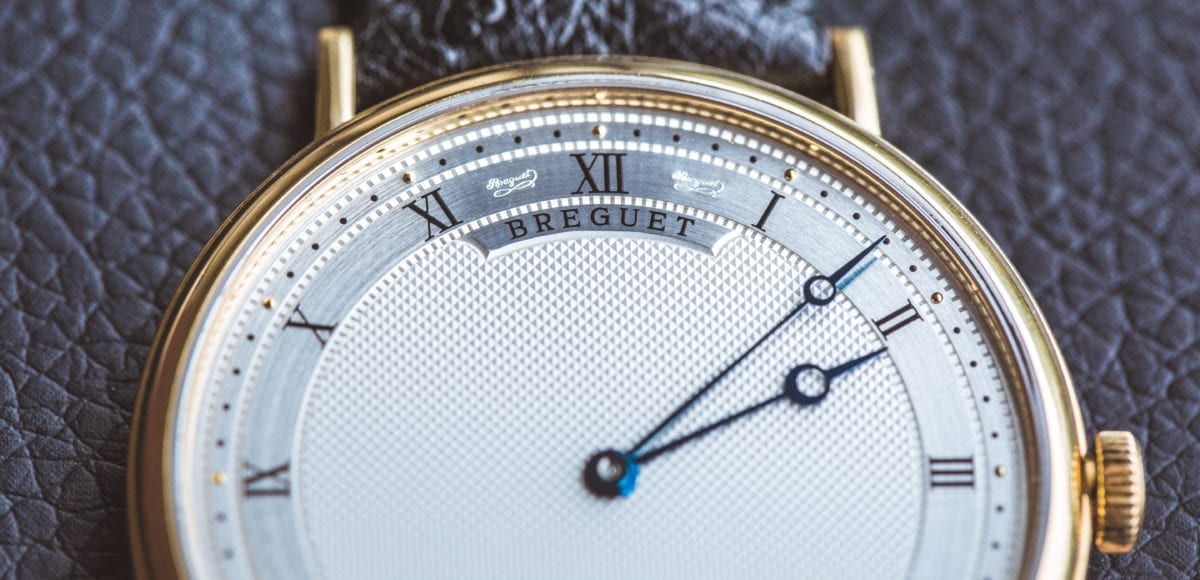Distinctive Appeals of the Dial
The watch dial is one of the most visually important components of the watch. To the style-conscious, it’s one of the most noticeable features. Some may even buy a watch based on the aesthetic of the dial.
Like the watch movement, the finishing of the dial is what distinguishes it. Some are plated brass. It can be finished in a number of different ways before it’s plated. A couple common examples include a brushed or matte finish, coated with a clear lacquer for protection. Other dials boast precious metals, like gold or silver, which can also incorporate different finishing methods. Some are plainly finished and, again, lacquered or plated to prevent oxidation. While others have more intricate techniques like guilloche, which engraves a pattern on the dial. Precious metals can also serve as the base for enamel. Ultimately, dials range from the straightforward to the elaborate. Here, we’ll explore different dial types and also the materials that make them.
Crosshair
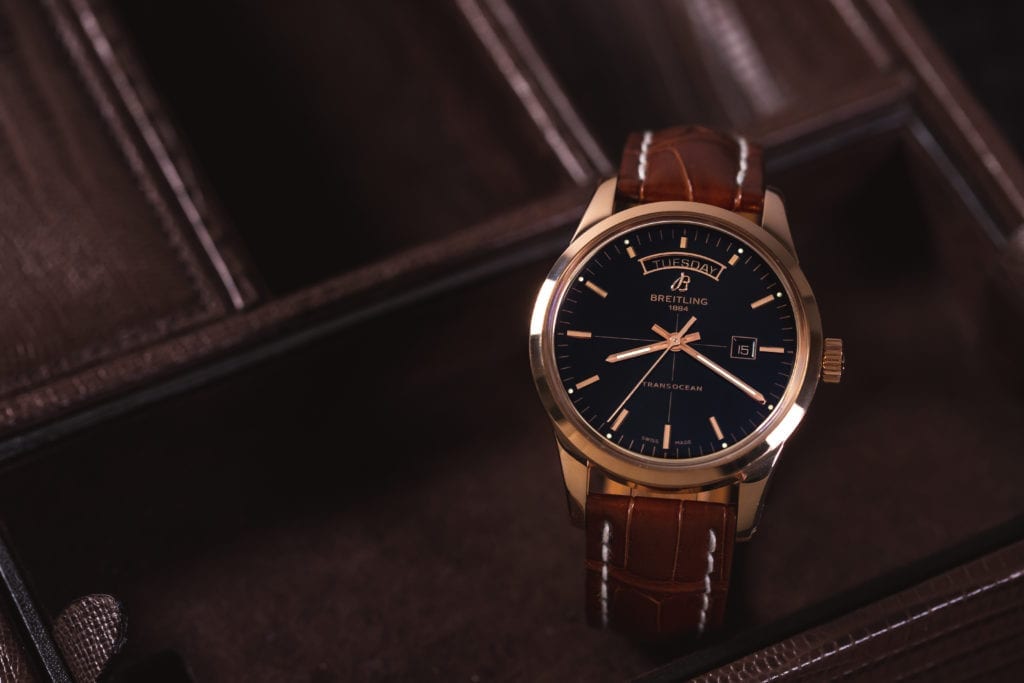
The crosshair design was a popular dial motif used on mid-century dress watches like the Omega DeVille or this Breitling Transocean. As the name suggests, it’s simply horizontal and vertical lines that cross in the center of the dial.
Enamel
We briefly touched on enamel. However, there are a number of different forms, like Cloisonné, Grande Feu, Champlevé, Flinque, and Grisaille. At the most basic level, enamel is a soft glass containing silica, red lead, and soda. When heated at incredibly high temperatures, enamel liquefies and can bond to metals.
Gilt
The gilt technique literally means covered thinly with gold leaf or gold paint. A gilt dial is just that. Gold paint can print all different features of a watch dial. In addition, some elements include the brand name, depth rating, watch name, or hour markers. The Rolex Submariner is one example of an iconic model that highlights this method. However, countless watchmakers create timepieces that feature gilt dials.
Guilloche
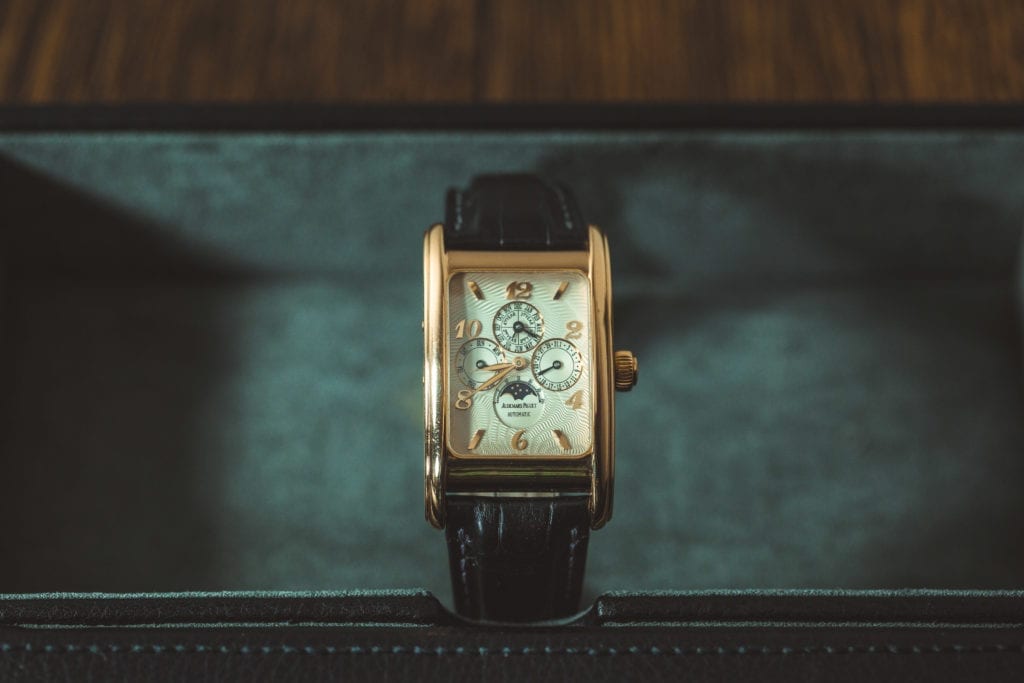
We also brushed the surface of the guilloche method. The traditional approach uses a hand-cranked rose engine, straight-line engine, or brocading machine. This engraves the dial, typically with a wave pattern. Sadly, hand-engraved guilloche is becoming a dying art because most modern guilloche dials today use a machine.
Linen
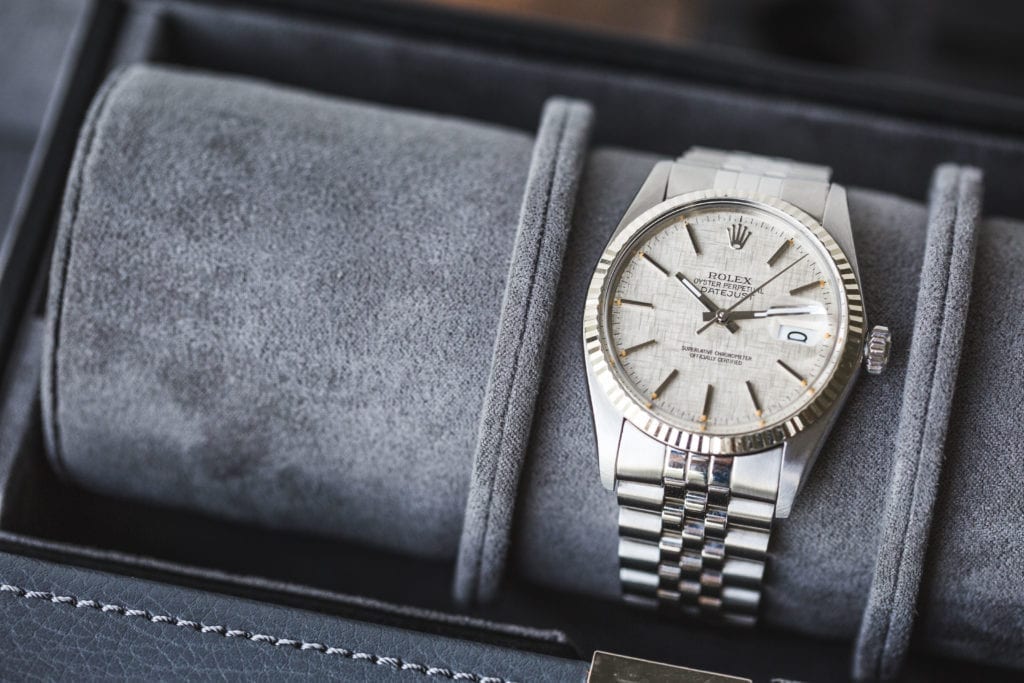
A linen dial doesn’t actually contain any cloth. Instead, it features a pattern that results in a look similar to the material. A combination of dozens of vertical and horizontal hatch marks create the design. The Rolex Datejust is just one model that showcases this unique dial.
Marquetry
Marquetry is another dial art form. It consists of layers of materials, like mother of pearl or precious stones. First, the artisan specifically cuts each of these elements. Then, the craftsman arranges them to form an image or pattern to overlay on the dial.
Meteorite
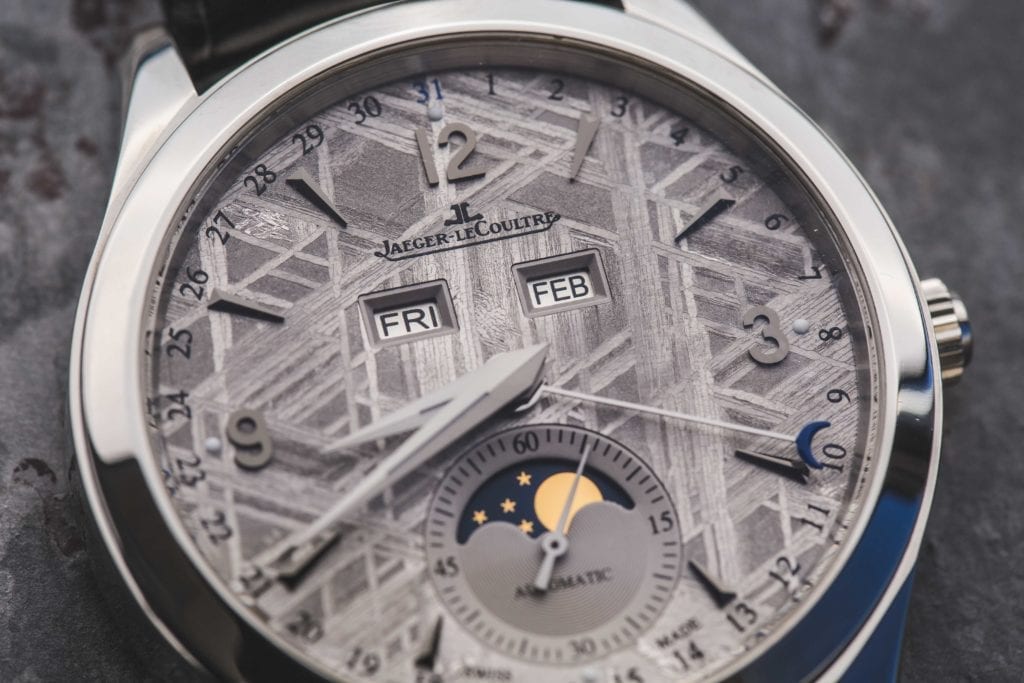
As the name indicates, a meteorite dial includes thin slices of actual meteorite. Artisans use various meteorites around the world, individually cutting and polishing each piece. Consequently, the resulting dials are unique. Also, no two are exactly alike. Triple calendar watches manufactured by brands like Jaeger-LeCoultre, Rolex, and Jaquet Droz most often feature meteorite dials.
Skeleton
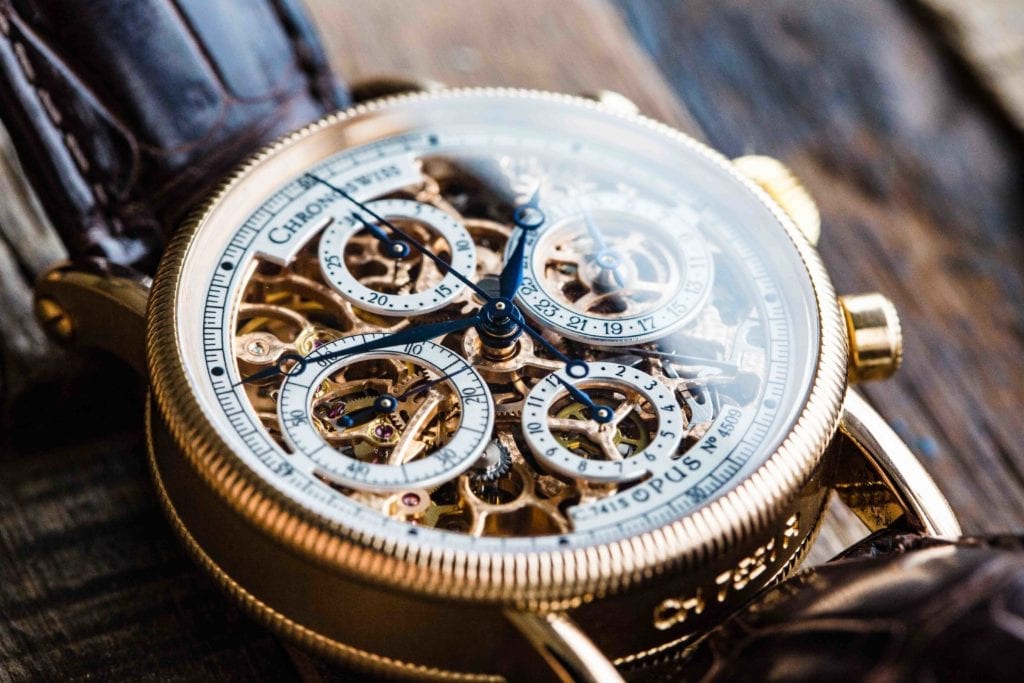
The skeleton dial appears highly complex, as it reveals the watch’s intricate movement. However, it’s actually the most uncomplicated example. It’s simply a transparent material, in earlier year’s glass and more commonly today sapphire crystal with antireflective coating.
Tapisserie
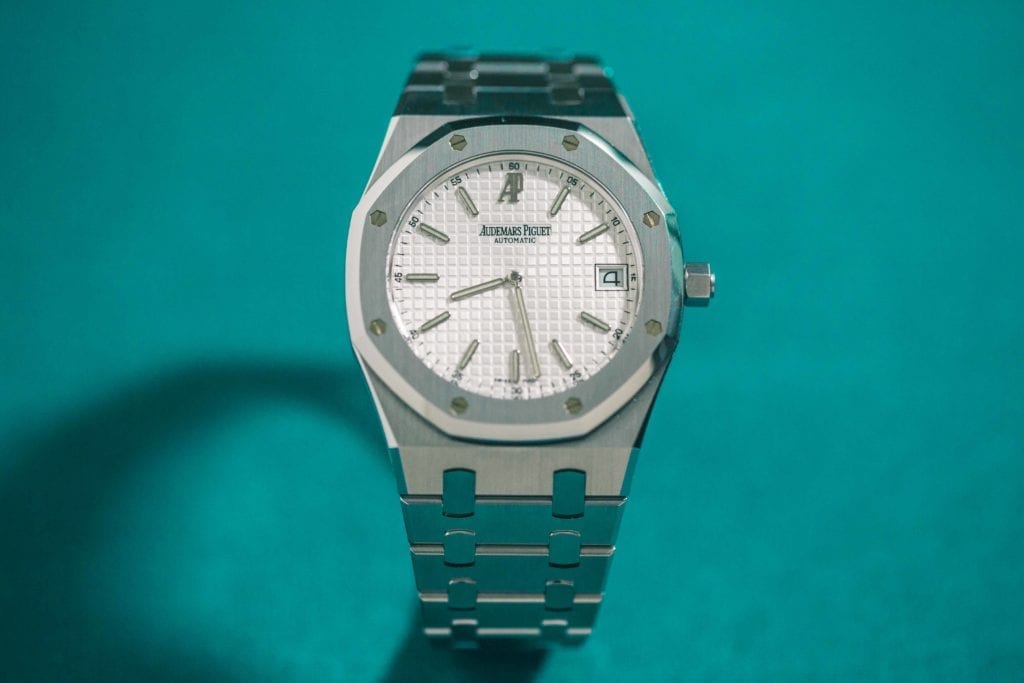
A tapisserie dial is somewhat like a guilloche. It consists of many small squares on the surface, separated by narrow channels. Similar to guilloche, a machine called a pantograph traces the design from a mockup and then engraves it onto the dial. The Audemars Piguet Royal Oak is quite possibly the most iconic tapisserie version of all time.
Teaked
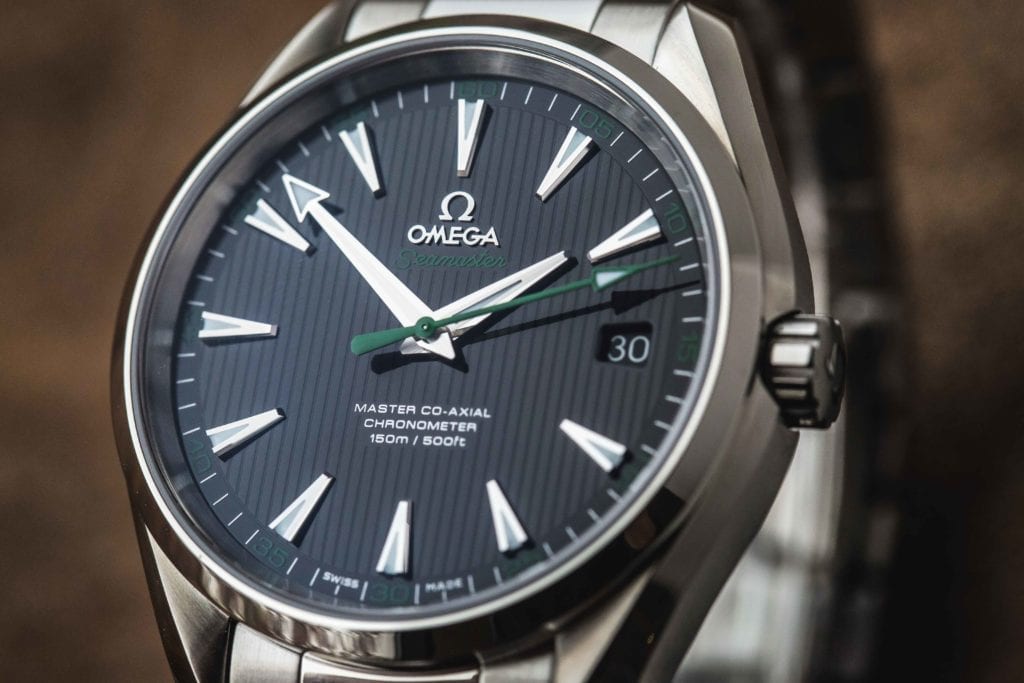
The final dial type we’ll discuss today is teaked. This is simply a dial with engraved vertical stripes. The Omega Seamaster Aqua Terra is a popular example of a teaked dial.
Get More Articles Like This in Your Inbox
We're constantly creating great content like this. So, why not get it delivered directly to your inbox? By subscribing you agree to our Privacy Policy but you can unsubscribe at any time.





